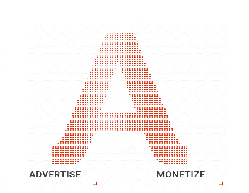FARTCOINUSDT – Probability Analysis for November 13, 2025
Title: FARTCOINUSDT — Probability Analysis (Nov 13, 2025)
Snapshot (live market evidence)
-
Current spot/perpetual price ~ $0.28 USDT (recent live quotes center around $0.28). (CoinGecko)
-
24-hour high / low: roughly 0.3099 / 0.2707 USDT (shows the intraday trading band). (Binance)
-
24-hour trading volume: on the order of $70–80M USD (CoinGecko / CoinMarketCap / Bitget reports show high volume in that range). (CoinGecko)
-
Exchange / market availability: actively traded on major CEXes (Bitget, Binance perp listings, KuCoin, Phemex etc.). TradingView’s market list confirms multi-exchange liquidity and shows a technical summary of “Neutral” on commonly used indicator sets. (TradingView)
Important note: this is probabilistic scenario analysis and not investment advice. Probabilities below are derived from the indicators and market facts cited — a reproducible, heuristic methodology is documented after the scenarios.
Quick technical context (what I used)
-
Price vs intraday band (current price relative to 24h low/high). (Binance)
-
Short-term momentum & consensus indicator summary from TradingView (Technicals gauge = Neutral). (TradingView)
-
Volume and recent multi-exchange liquidity (high 24h volume supports continued tradability). (CoinGecko)
-
Presence of perpetual/futures markets (affects leverage flows, liquidations, funding). (Bitget)
Daily probability (24 hours) — short timeframe
-
Bullish (price up > 3% from now): 35%
-
Neutral (rangebound within ±3%): 40%
-
Bearish (price down > 3%): 25%
Why (daily): price currently sits mid/low of the 24h band (~0.27–0.31). TradingView technicals read Neutral — that + solid volume suggests a slightly higher chance of rangebound/mean reversion than a decisive breakout. Short-term futures/lev flows can quickly flip this, so daily probabilities keep the largest single bucket as neutral. (Binance)
Weekly probability (7 days)
-
Bullish (new local swing high, +10% or more): 40%
-
Neutral (rangebound, +/-10%): 35%
-
Bearish (drop >10%): 25%
Why (weekly): weekly horizon gives momentum more room to materialize. The token shows decent liquidity and has had strong short squeezes / meme-coin rebounds historically; that raises the bullish tail relative to daily. Still, neutral remains material because the TradingView technicals are not strongly bullish and broader market behavior for meme coins can be volatile. Volume confirms market engagement but not directional conviction yet. (CoinGecko)
Monthly probability (30 days)
-
Bullish (sustained uptrend, +25% or more): 45%
-
Neutral (rangebound within ±25%): 30%
-
Bearish (drop >25%): 25%
Why (monthly): over a month, meme tokens frequently display the largest moves — both up and down — especially if positive social momentum or listings appear. Given active listings on multiple CEXs and ongoing futures availability (which amplifies moves), the bullish probability is the single largest on the month horizon — but downside risk remains significant and nontrivial. (Bitget)
Methodology — how I calculated these probabilities (reproducible heuristic)
-
Gather live numeric inputs (price, 24h high/low, 24h volume, presence of perp markets, exchange listings). Use those as objective facts. (Binance)
-
Read TradingView “Technicals” summary on the selected timeframe for a sentiment/indicator consensus (it shows Neutral → reduces extreme probabilities). (TradingView)
-
Define scenario thresholds for each horizon (daily ±3%, weekly ±10%, monthly ±25% — you can change these if you prefer tighter/wider buckets).
-
Assign baseline probabilities from historical behavior of similar meme-coins (higher volatility, higher tail probabilities). Then adjust using:
-
Price position within the intraday band (closer to high → more upside risk; closer to low → more rebound probability). (Binance)
-
Volume (strong volume increases chance of continuation or significant move). (CoinGecko)
-
Technical consensus (TradingView Neutral dampens both extreme up and extreme down chance). (TradingView)
-
Presence of leveraged markets (futures) — increases probability of sudden directional moves due to liquidations. (Bitget)
-
-
Convert qualitative adjustments into percentage shifts across the three scenario buckets. This is a judgmental, transparent approach (not a statistical model), but it’s reproducible: change the influence weight of any factor to re-compute probabilities.
Key levels (for quick trade/risk reference)
-
Immediate support: ~0.270–0.275 USDT (near 24h low). (Binance)
-
Immediate resistance: ~0.308–0.310 USDT (near 24h high / recent rejections). (Binance)
-
If price decisively closes above 0.32–0.35 with volume, odds of a sustained weekly bullish leg increase materially (watch for break + retest). Market ideas on TradingView highlight 0.35–0.40 as next target if broader momentum resumes. (TradingView)
Risk & trade management notes (practical)
-
Because a futures/perpetual market exists, be careful of added liquidation risk on leveraged positions — funding and open interest can amplify moves quickly. (Bitget)
-
Use stop sizing appropriate to your capital; meme coins can gap on headlines or listings. Keep position sizes small and use defined risk.
-
Recompute probabilities whenever a meaningful event occurs (listing, influencer mention, or a large volume spike). The method above is meant to be re-run with new live inputs.
How you can reproduce/update this yourself (quick checklist)
-
Check live price + 24h high/low on Bitget / Binance / CoinGecko. (Bitget)
-
Check 24h volume on CoinGecko or CoinMarketCap. (CoinGecko)
-
Open TradingView technicals gauge for the symbol to see the indicator consensus (buy/neutral/sell). (TradingView)
-
Reapply the scenario thresholds (daily ±3%; weekly ±10%; monthly ±25%) and shift probabilities by the factor weights you prefer.
Disclaimer
This post is for educational and informational purposes only. This is not financial, legal, tax, or investment advice, and should not be considered a trading signal. Cryptocurrency markets are volatile and risky. Always confirm live prices on your chosen exchange and conduct your own research (DYOR) or consult a licensed professional before making financial decisions.













